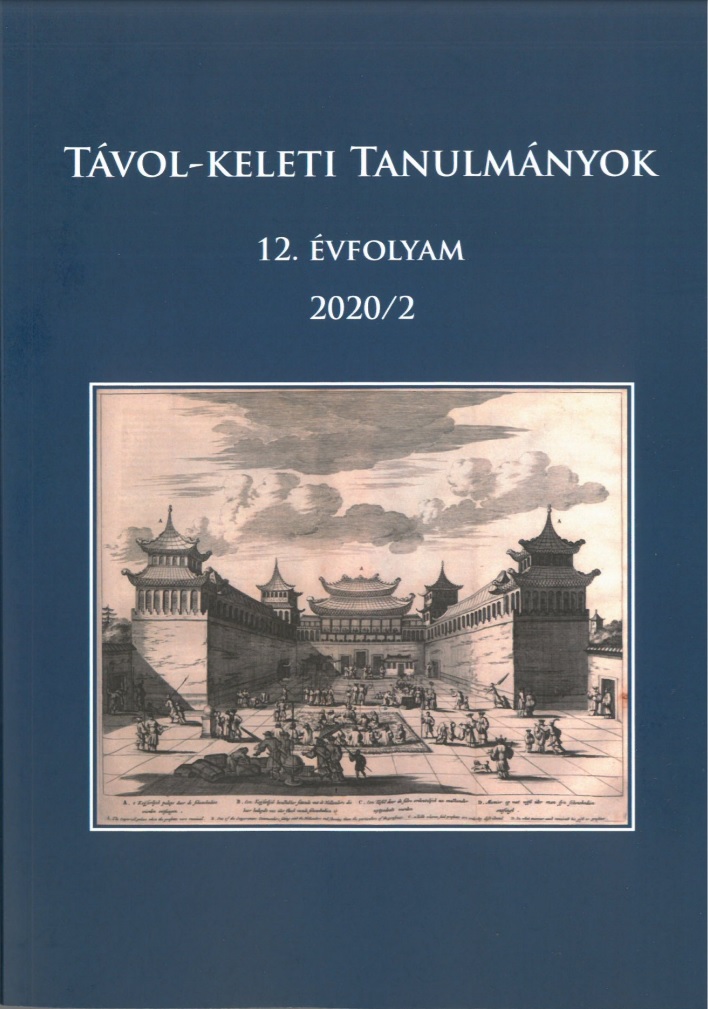Regulation of weapon use and possession in the Ming era based on laws of the Da Ming lü
Published 2021-07-12
Keywords
- Chinese martial arts history,
- Chinese military history,
- Chinese legal history,
- Da Ming lü,
- Great Ming Code
- Ming dynasty,
- weapon possession,
- armed violence ...More
How to Cite
Copyright (c) 2021 the author(s)

This work is licensed under a Creative Commons Attribution-NonCommercial 4.0 International License.
Abstract
The period of the Ming dynasty is traditionally considered to be the golden age of martial arts in China. Recent studies in the field of Chinese martial arts history confirm that physical, armed violence was endemic in the everyday life of the era, its scope ranging from regular bandit attacks to clan feuds and local uprisings. Little is known, however, about how the Ming legal system dealt with the presence of weapons and armed violence in society. This study aims to examine how Ming law sanctioned armed violence and regulated the possession of weapons by civilians through an analysis of the relevant articles of the Da Ming lü 大明律 [Great Ming Code]. The analysis of articles of penal and military law shows that the rules covering civilian weapon possession were quite permissive, with only a few restrictions that guaranteed the safety of the imperial palace and the technological superiority of the military. Armed violence was punished more severely compared to unarmed assault, however only by a small degree. In cases of homicide, laws did not differentiate between armed and unarmed crime. These regulations, among other factors, may have contributed to the formation of the violent environment which was essential for martial arts and martial arts culture to prosper.
References
- Liu, Weiqian 劉惟謙 (ed.) 2002. „Da Ming lü 大明律 [A Ming-dinasztia törvénykönyve].” In: Johnson, Wallace (ed.): Ming Code. Journal of Asian Legal History.
- Alabaster, Ernest 1899. Notes And Commentaries On Chinese Criminal Law. London: Luzac & Company.
- Bian, Li 卞利 2000. „Mingdai Huizhou de minshi jiufen yu minshi susong 明代徽州的民事纠纷与民事诉讼.” Lishi Yanjiu 历史研究 2001/1: 94–105.
- Bowman, Paul 2015. Martial Arts Studies; Disrupting Disciplinary Boundaries (Disruptions). London–New York: Rowman & Littlefield International.
- Burkart, Eric 2016. „Limits of Understanding in the Study of Lost Martial Arts.” Acta Periodica Duellatorum 4/2: 5–30.
- Chan, Hok-Lam 2009. „Ming Taizu's ’Placards’ on Harsh Regulations and Punishments Revealed in Gu Qiyuan's ’Kezuo zhuiyu’.” Asia Major 22/1: 13–39.
- Fairbank, John King – Goldman, Merle 2006. China, a new history. Cambridge, Massachusetts–London, England: Harvard University Press.
- Farmer, Edward L. 1993. „The Great Ming Commandment (Ta Ming Ling): An Inquiry into Early-Ming SocialLegislation” Asia Major 6/2: 181–199.
- Farmer, Edward L. 1995. Zhu Yuanzhang and Early Ming Legislation: The Reordering of Chinese Society Following the Era of Mongol Rule. Leiden: Brill.
- Godley, Michael R. 1994. „The end of the queue: hair as symbol in chinese history.” East Asian History 8: 53–72.
- Han, Sangdon 한상돈; Jo Jiman 조지만 2015. „The Study on the Period of Responsibility for Crimes in the Great Ming Code.” Korean Journal of Legal History 51: 69–98.
- Han, Sangkwon 한상권 2019. „Penal System and Theory of Punishment of the Dang Dynasty’s Code and the Ming Dynasty’s Code.” Korean Journal of Legal History 59: 197–199.
- Han, Sangkwon 한상권 2019. „Penal System and Theory of Punishment of the Dang Dynasty’s Code and the Ming Dynasty’s Code.” Korean Journal of Legal History 59: 197–199.
- Head, John W. et al. 2005. Law Codes in Dynastic China. Durham: Carolina Academic Press.
- Henderson, Dan Fenno 1980. „Chinese Influences on Eighteenth-century Tokugawa Codes.” In: Cohen, Jerome Alan et al. (eds.): Essays on China's Legal Tradition. New Jersey: Princeton University Press.
- Jiang, Yonglin 2010. „In the Name of ’Taizu’: The Construction of Zhu Yuanzhang's Legal Philosophy and ChineseCultural Identity in the ’Veritable Records of Taizu’.” T'oung Pao. 96, 4/5: 408–470.
- Johnson, Wallace (trans.) 1997. The Tang Code, Volume II. Specific Articles. New Jersey: Princeton University Press.
- Langlois Jr., John D. 1993. „The Code and ad hoc Legislation in Ming Law.” Asia Major 6/2: 85–112.
- Li, Jiyuan 李吉远 2018. Mingdai Wushushi Yanjiu 明代武术史研究 [A Ming-kori harcművészet-történet vizsgálata]. Zhongguo Shehui Kexue Chubanshe 中国社会科学出版社.
- Liu, Changjiang 刘长江 2005. „Mingdai fazheng tizhi shulun 明代法政体制述论” Sichuan Shifan Daxue Xuebao 四川师范大学学报6: 4–43.
- Lorge, Peter 2012. Chinese Martial Arts: from antiquity to the twenty-first century. New York: Cambridge University Press.
- MacCormack, Geoffrey 1996. The Spirit of Traditional Chinese Law. Athens: University of Georgia Press.
- MacCormack, Geoffrey 2006. „The Legalist School and its Influence upon Traditional Chinese Law.” Archives for Philosophy of Lawand Social Philosophy 92/1: 59–81.
- Peers, Chris 1997. Late Imperial Chinese Armies 1520–1840. [Osprey Military Men-At-Arms 307.] London–Auckland–Melbourne: Osprey.
- Waltner, Ann 1996. „Breaking the law: Family violence, gender and hierarchy in the legal code of the Ming dynasty.” Ming Studies 1996/1: 29–43.
- Wang, Xin王昕 2010. „Mingdai liuke gei shizhong zhidu ji qi xiandai qishi 明代六科给事中制度及其现代启示” Liaoning Daxue Xuebao 辽宁大学学报 2010/4: 63–69.
- Zhou, Wei 周纬 2015. Zhongguo bingqishi 中国兵器史 [A kínai fegyverek története]. Zhongguo youyi chuban gongsi 中国友谊出版公司.

